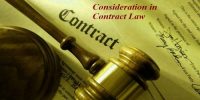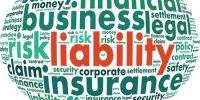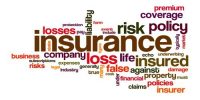Different Types of Merit Rating
The third principal type of rating method in property and liability insurance is merit rating. Merit rating is a rating plan by which class rates are adjusted upward or downward based on individual loss experience. Merit rating is based on the assumption that the loss experience of particular insured will differ substantially from the loss experience of other insured. There are several different schedule rating, experience, rating, retrospective rating.
(a) Schedule rating: Under a schedule rating plan, each exposure is individually rated. A basis rate is determined for each exposure which is then modified by debits or credits for undesirable or desirable physical features. Thus, the physical features of the exposures to be insured are extremely important in schedule rating. Schedule rating is used commercial property insurance for large complex building such as an industrial plant. Each building is individually rated, based on factors like construction, occupancy, protection, exposure and maintenance.
- Construction: It refers to the physical characteristics of the building.
- Occupancy: It refers to the use of the building.
- Protection: It refers to the quality of the city’s water supply and fire department.
- Exposure: It refers to the possibility that the insured building will be damaged or destroyed from a fire that starts in an adjacent building and spreads to the insured buildings.
- Maintenance: It refers to the housekeeping and overall maintenance of a building.
(b) Experience rating:
Experience rating is another form of merit rating. Under experience rating, the class or manual rate is adjusted upward or downward based on past loss experience. The most distinctive characteristics of experience rating are that the insured’s past loss experience is used to determine the premium for the next policy period. The loss experience over the past three years is typically used to determine the premium for the next policy year.
Example: Assume that a retail firm has a general liability insurance policy that is experience rated. The annual premium is $ 30,000 and the expected loss ratio is 30%. If the actual ratio over the past three years is 20% and the credibility factor (C) is 0.29 the firth will receive a premium reduction of 9.7 %. This can be illustrated by the followings:
Premium change = [A – E] / E x C
= [(0.20 – 0.30) / 0.30] x 0.29 = – 9.7%
(c) Retrospective rating:
The third form of merit is a retrospective rating. Under a retrospective rating plan, the insured’s loss experience during the current policy period determines the actual premium paid for that period.
Example: Retrospective rating is widely used by large firms is worker’s compensation insurance. Generally liability insurance, auto liability and physical damage insurance and burglary and glass insurance.
















